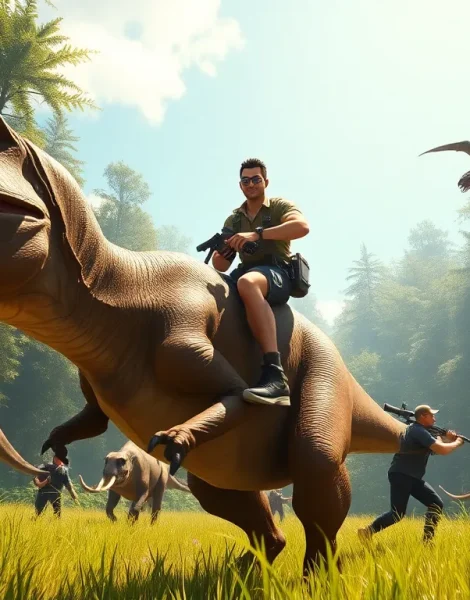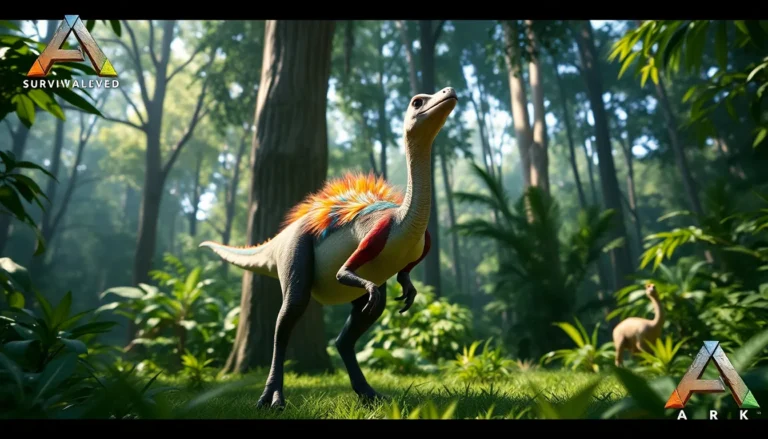Have you ever tried to outrun a T-Rex while simultaneously taming a Paracer? Ark Survival Evolved isn’t just a game: it’s a wild expedition where animals aren’t just companions, they’re crucial teammates in the treacherous world of survival. Picture this: navigating through lush forests or scaling mountains while riding your trusty dino sidekick. It’s chaotic, sometimes hilarious, and always exhilarating. In this comprehensive guide, we’ll jump into the captivating world of Ark animals and how they play an essential role in your gaming experience.
Table of Contents
ToggleOverview of Ark Survival Evolved

Ark Survival Evolved, the ultimate survival game, throws players into an open world filled with prehistoric creatures, stunning landscapes, and a hefty dose of danger. Released in 2017, this game allows individuals to build settlements, craft items, and most importantly, tame a variety of animals. Whether players are harnessing the power of ferocious beasts for combat or nurturing the more docile creatures for resources, animals are at the heart of the Ark experience. The vastness of Ark’s environment invites exploration, but it’s the intriguing interactions with these animals that truly define gameplay. From the humble Dodo to the fearsome Giganotosaurus, every creature has its unique traits and challenges players to adapt and strategize.
Importance of Animals in Gameplay
Animals in Ark aren’t just window dressing: they are integral to survival, resource gathering, and even combat. Players rely on them for transportation, as speedy Raptors can whisk players across the map, making exploration much easier. Many animals can also be used to gather resources more efficiently. Take the Triceratops, for instance. With its massive size and strength, it’s perfect for collecting berries or even defending against foes.
Also, animals can provide players with a sense of community when taming and breeding them. This adds layers of complexity to gameplay, inviting players to strategize not just for survival, but also for evolving their animal companions. The bond created between a player and their tamed creature can be incredibly rewarding, underscoring the emotional investment that comes with surviving on the Ark.
Types of Animals in Ark Survival Evolved
Ark Survival Evolved hosts an incredibly diverse array of animals, categorized into several distinct types. Predatory dinosaurs, such as the Velociraptor and Allosaurus, are designed for combat and provide players with offensive power. On the other hand, herbivores, like the Parasaur and Stegosaurus, can be invaluable for resource gathering and defensive strategies.
Dinosaurs
Dinosaurs take center stage in Ark, ranging from the smallest Dodo to the mightiest Brontosaurus. Each species has specific roles, strengths, and weaknesses. For example, the T-Rex is the king of the jungle, fearsome in battles, but also vulnerable to certain tactics, making player decisions crucial.
Land Mammals
Plus to dinosaurs, Ark features various land mammals, like the Woolly Mammoth or Sabertooth Tiger, that can aid in combat while serving practical purposes like carrying loads and gathering resources.
Aquatic Creatures
Don’t forget the aquatic aspect. Animals like the Megalodon and the Plesiosaur thrive in Ark’s oceans, offering unique challenges and methods for gathering underwater resources.
Birds
Flying animals like Argentavis and Pteranodon provide aerial transportation but also allow for scouting and strategic advantages from above. Each type of animal serves a specific purpose, emphasizing the need for careful selection based on players’ gameplay styles.
Taming and Breeding Animals
Taming animals in Ark adds a whole new dimension to the game. It’s not just about conquering a wild creature: it requires patience, strategy, and sometimes a bit of luck. Players can use various methods, such as knocking the animal unconscious, feeding it specific foods, and waiting for it to accept them, needless to say, it’s not always a walk in the park.
Once tamed, animals can be nurtured and bred, leading to offspring that can inherit attributes from their parents. This breeding mechanic allows players to create stronger, more efficient creatures tailored to specific roles within their strategy. The joy of seeing a couple of Raptors breeding may seem trivial, but it’s a fulfilling part of the Ark experience.
Taming Techniques
To successfully tame an animal, understanding its behavior is crucial. Some creatures require you to maintain distance, while others might be more aggressive. Obsidian tools, tranquilizer arrows, and even cooked meats are among the various tools players can use. The key is patience: rushing can lead to quick failure.
Breeding Strategies
When it comes to breeding, players can focus on traits like speed, strength, or stamina based on their future needs. Planning for your future animals is vital: sooner or later, tamers will want to have a specialized troop ready for their unique gameplay style. After all, a fully-loaded pack of superbly bred creatures can transform combat dynamics.
Best Animals for Different Play Styles
Knowing which animals best suit a player’s style can drastically improve one’s performance in Ark. For combat-heavy players, dinosaurs like the T-Rex or Spinosaurus can act as powerful allies. Relying on high-damage output and resilience, these creatures lead the charge into battle.
Conversely, those focused on exploration will find that fast, agile tames like the Argentavis or the Pteranodon are superior for traversing the diverse terrains of Ark. These birds offer speed and a tactical aerial view of the surroundings, essential for scouting.
For resource gatherers, creatures like the Mammoth or Ankylo can boost productivity. The Mammoth excels at harvesting wood and berries, while the Ankylo specializes in collecting metal and flint. Understanding player goals directly influences animal choices, making it crucial to evaluate which creatures to tame early on.









